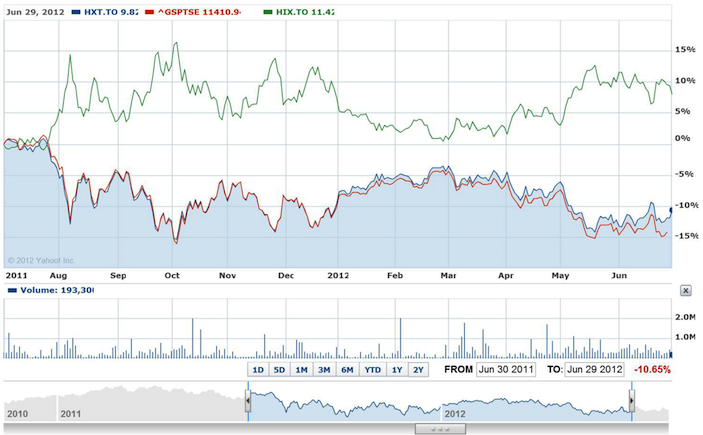Charts Can Be Used For Investing In ETFs
Post on: 4 Июнь, 2015 No Comment

The same chart analysis used to trade stocks can also be applied to exchange traded funds, those instruments that resemble mutual funds but are traded as stocks.
Buying high-volume breakouts from cup with handles, double bottoms and other reliable base patterns, along with pullbacks to the 10-week moving average, offers the same probabilities of success with ETF charts as for stocks.
But depending on how much an ETF trades on a daily basis, volume can be misleading. Unlike stocks, which have a fixed number of shares, ETF shares can be continually created and redeemed according to demand.
ETFs are synthetic securities and theoretically, the number of their shares, like mutual funds, can be infinite. And with ETFs that only trade a few thousand shares a day, a small amount of buying could drive the volume bar higher. A jump in volume could indicate strong institutional interest, but it may not make prices rise.
An ETF’s price is based on the underlying securities it holds. Similar to the way mutual fund share prices are calculated, an ETF’s price (or net asset value) is computed by taking the total of its assets, less liabilities, and dividing by the number of shares outstanding.
You also can apply the same sell rules to ETFs as you do for stocks. For instance, a significant break below the 50-day moving average may signal more weakness ahead.
Like with stocks, IBD’s Relative Price Strength and Accumulation/Distribution Ratings will tell you which ones are outperforming the market and which ones are lagging.
The RS Rating, based on a scale from 1 to 99, shows how an ETF is performing against the rest of the market — not just ETFs.
Depending on your risk appetite, focus on buying ETFs with the highest RS Ratings. The double- and triple-leveraged ETFs tend to have the highest RS Ratings, but they’re extremely volatile and should be avoided in sideways trending markets.
Market Vectors Coal (KOL ) sported an RS Rating that fluctuated in the mid-80s last summer. It had the highest RS Rating among nonleveraged sector ETFs.
KOL owns a basket of 38 companies that get at least half their revenues from the coal industry.
It trades an average of 680,000 shares a day and charges an expense ratio of 0.62%.
Driven by price surges in a few of its largest holdings — Peabody Energy (BTU ), Consol Energy (CNX ) and Joy Global (JOYG ) — KOL gapped up 4% on Aug. 3, 2009 1. It closed at 28.66.














